
Dolores Phelps
“This ‘pressure’ to get as much Insta love as possible is quite strong and I give in to it from time to time”
Painter specialising in watercolour.
Could you summarise your creative journey so far?
I have been in an intensive phase of experimentation and exploration for the past three years, which I have documented on my Instagram account www.instagram.com/doloresphelpswatercolours. The intent was to develop my practice and find my authentic voice. During this time I have discovered many things – working with clay admixtures and gravity granulation, developing my own cold wax medium with which to coat watercolours, honing my knowledge of colour mixing, working to larger scale and with ever larger brushes and even trying oil painting. I am starting to find the abstraction that results from letting gravity form the paint into natural shapes – a certain ‘zen’ point of view that is in keeping with my current thinking, which draws upon Buddhist precepts and wisdom.
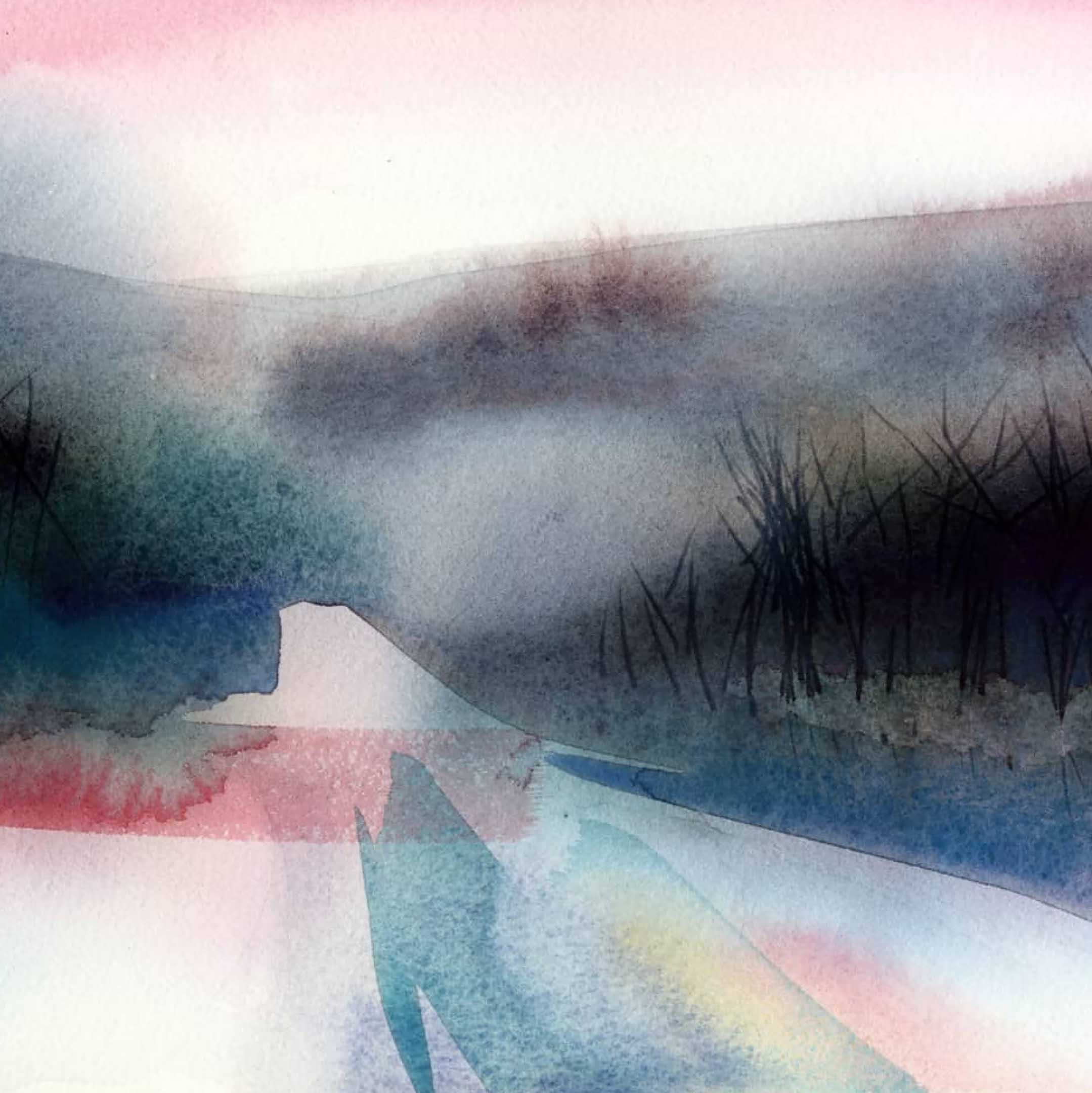
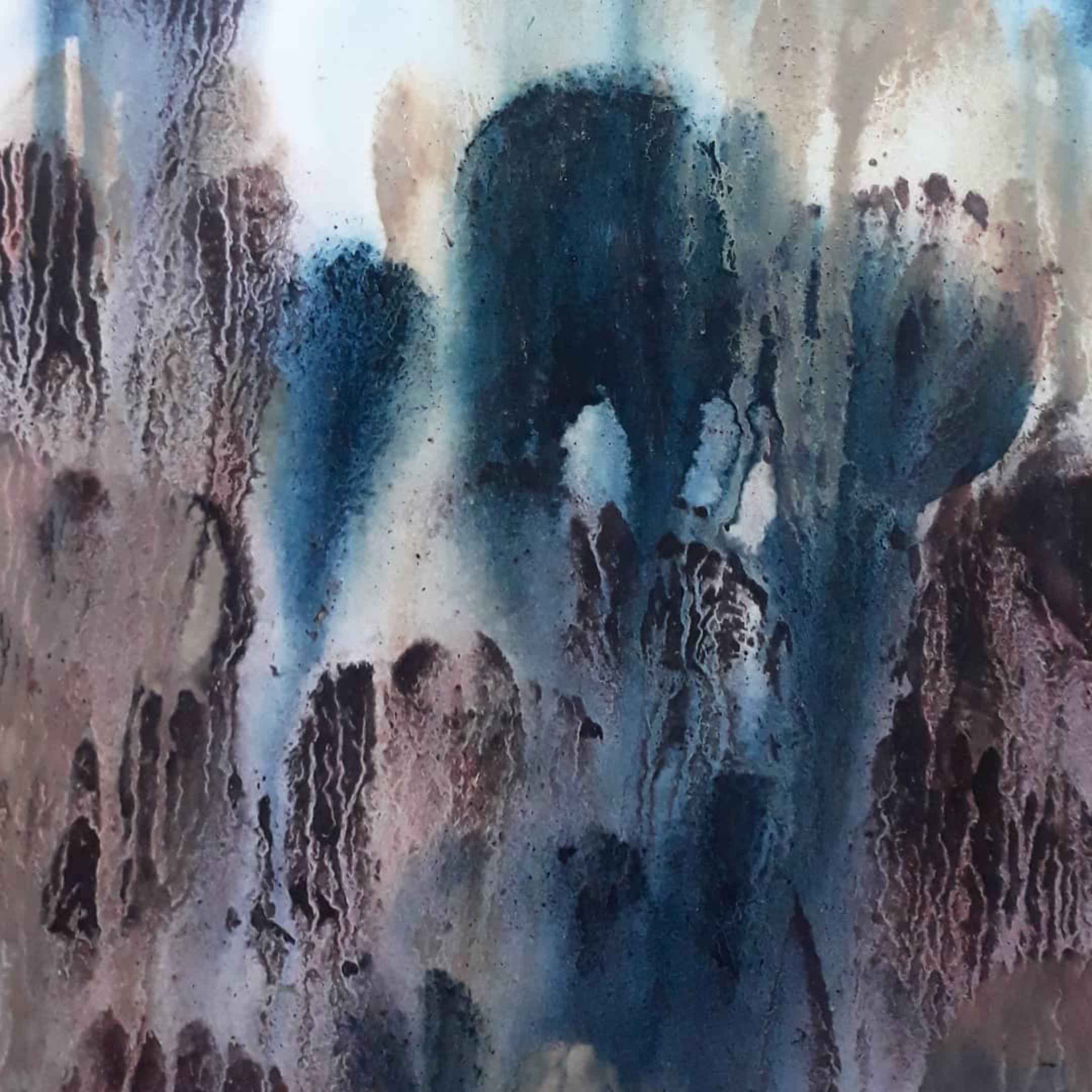
How did you find your current style?
In this last three years my work has gone back and forth somewhat between abstraction and more representational subject matter – especially when working on treescapes, as trees are very hard to make abstract. Using gravity – tipping the paper so that the paint flows and creates patterns – has been a constant since I first began, and when I recently discovered the work of Paul Jenkins and other abstract ‘action’ painters who use thrown and dropped paint, I have determined to use watercolour in a similar way and fully expect that my mature style will emerge from this.

“Making a living by my art is certainly something I wish to do eventually, but it takes time to develop an authentic voice”
Did you ever have anyone say they didn’t understand / like your work and how do you cope with that?
People are very rarely openly critical, and especially so on Instagram, as it is such a wonderfully positive platform, which is one reason why I like it so much! I have had a relative inform me they thought my recent abstracts looked rather ‘easy to do’ compared to my treescapes. I understand that representational paintings are easier to comprehend but I hope that my larger abstracts will appeal to an audience who appreciate good design that will complement an interior. I am about to present a body of commissioned work to a client so I may have to come back to you on how I might cope with rejection!
You seem to be confident to “go your own way” was there ever pressure to conform?
I sometimes feel some pressure to exhibit my work in galleries as this is one accepted way to achieve recognition and validation, but I have very clearly defined goals in terms of selling my work. I want to sell my work unframed, online or via commission. I want to sell direct to buyers; I am not very interested in selling via galleries, as the high percentages, and logistics of moving framed pieces around for ‘sale or return’ is unacceptable to me. The pandemic has emphasised to me the idea of bypassing the gallery. However this has its disadvantages (see below).
I am also aware of the temptation to post things that I know will get likes on Insta, or that will sell. This ‘pressure’ to get as much Insta love as possible is quite strong and I give in to it from time to time, but I think it is made up for by the fact that it’s so helpful to be able to review your own progress and development and be your own critic by seeing your work online. I am also in a fortunate position (for the time being) that I do not have to earn a living by my art, which gives me the freedom to develop and take risks. Making a living by my art is certainly something I wish to do eventually, but it takes time to develop an authentic voice and I am still not quite there yet!
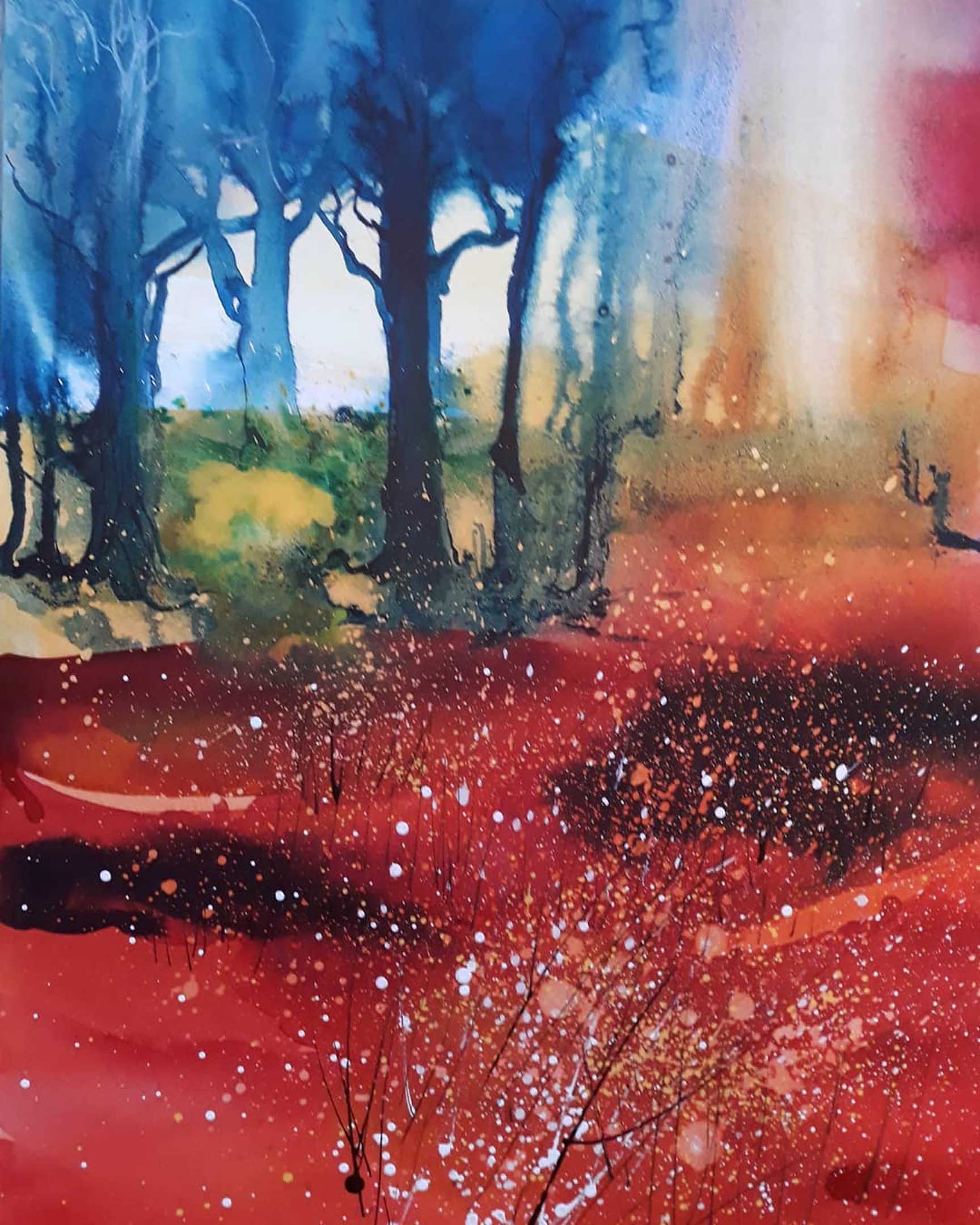
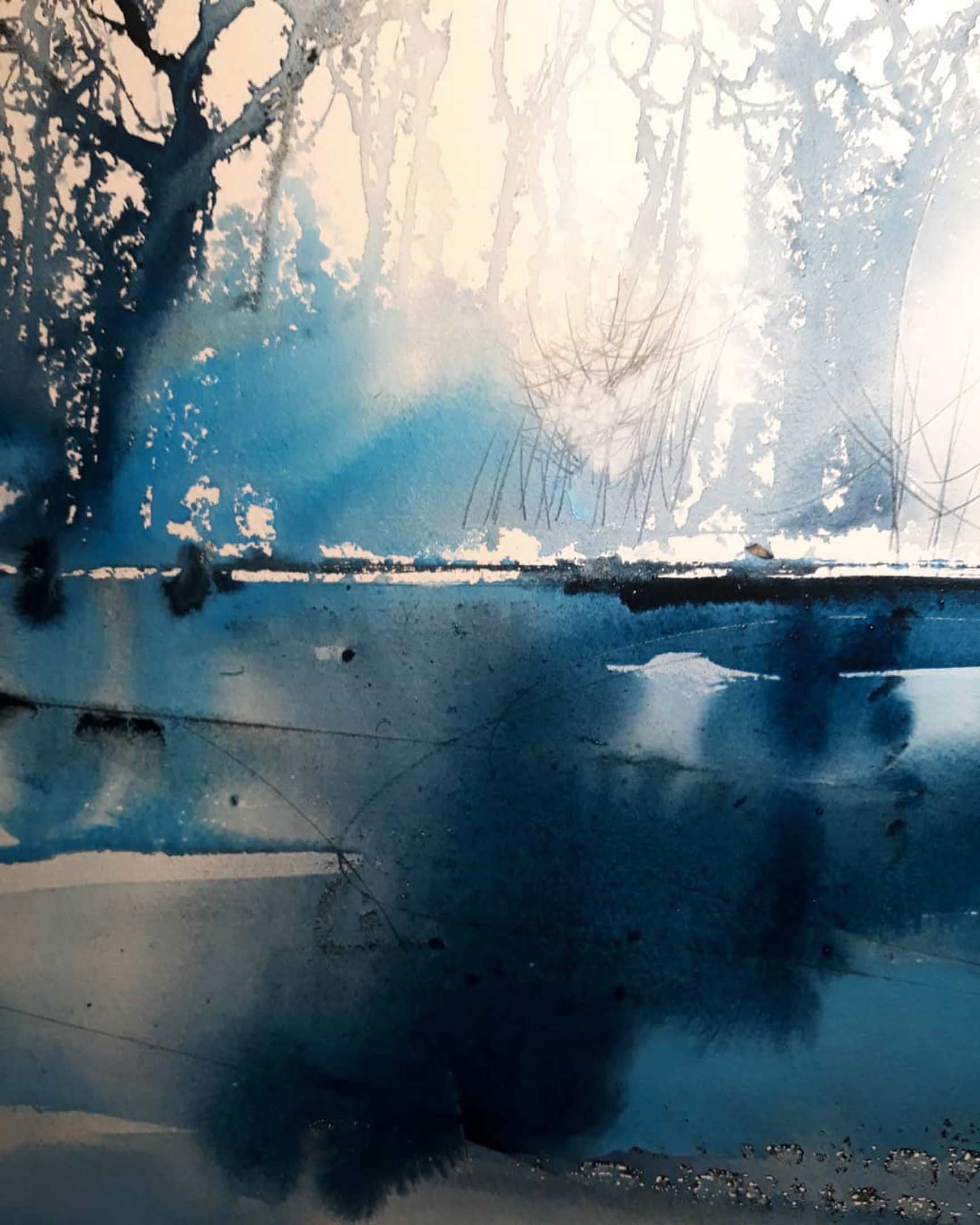
Could you tell us about your artistic process and how you decide that something is “good enough”?
This can be so hard. As I mentioned before, it’s so useful reviewing paintings online (especially on Insta) which can often reveal flaws in composition or indicate that the painting needs a little more work. I tend to work on quite a few pieces at the same time, and some have to sit ‘on the shelf’ for quite a while until I feel I know what needs doing to finish it. With watercolour, it’s so easy to overwork and lose all the freshness and energy of the colour, but conversely it is often necessary to allow one painting session to completely dry before adding another layer, which always runs the risk of obliterating a promising set of marks. Allowing colours to mix on the paper, rather than in the palette, has always been a principle, as has using gravity to create flowing natural effects and/or granulation. You have to be in the zone, mindful and present, when putting watercolour down in a dynamic way. If I’m tired and /or not in the present moment, it’s so easy to mess it up. If a painting hasn’t made the grade, I have several options: apply a transparent acrylic ground and paint over it in oils; cut it up to either crop it or make greetings cards out of it; or tear it into little bits!
Who/what are your main influences?
When I started, my response was entirely to the environment of the forest and rivers around me and other places I loved such as the coast, the Welsh Mountains and Bodmin Moor. I have a pretty good knowledge of the history of art and would list JMW Turner, John Sell Cotman, Francis Towne and Eric Ravilious among my favourite watercolourists, but they did not influence my style particularly.
As I started to discover more contemporary artists on Instagram I discovered wonderful creators in watercolour: Ana Zanic (@anazanic_art), Stefan Gevers (@stefangevers) Helen Dealtry (@helendealtry), Helene Callesen (@helene_callesen). These artists have been extremely influential. Then I discovered Paul Jenkins, an ‘action painter’ of the late 20th century that has had a great rise in popularity recently – and several artists who currently work in this style : Bette Ridgway and Vicki McFarland amongst others. These artists have had a recent and massive impact on my latest work. I’m still working through this development!
What annoys you most about the art world?
I have little to no contact or real experience with the ‘art world’, if by that you mean gallerists, critics, agents or curators. My plan has always been to sell my work directly online and unframed to members of the public, art consultants, corporate clients or interior designers, especially as I am now working to a larger scale. I used to sell paintings by framing them and putting them on the wall of a local café. After a couple of small solo exhibitions, I decided I neither had the time, money, space, transportation or inclination to have a lot of work lying around in fragile and expensive frames. Not showing my work in exhibitions or galleries has its downsides however. A prestigious French online agency contacted me recently, but were unhappy with the fact I had no CV to speak of in terms of gallery shows, so they did not engage me. I do not know whether my no-gallery approach will succeed, however I have just been given a commission for an interior, so we will see!
You were once a teacher, do you believe that talent is natural or do you think it can be taught?
Perhaps neither are true. Is talent natural? What exactly is talent? I think every human being is capable of incredible achievements. Every person can achieve what they want, the question is fair opportunity (bring back free art school!), motivation and how much they really, REALLY want to achieve their goals. Aptitude, such as an aptitude for drawing, is a definite variable; some cannot seem to see what others do, or their hand-eye coordination is not suited to drawing things accurately. But there will be compensatory aptitudes.
I saw a discussion recently about the value of going to art school – or not – and I understand that it’s not necessary for many people, and that many people make successful livings from selling art without having gone to art school. I also sadly realise that what I grew up to know as ‘art school’ has turned into a consumer industry where hapless young people get into large amounts of debt in exchange for a dubiously valuable arts degree, which in my day would make them only one of a few hundred in the UK each year, but now runs into thousands due to the proliferation of courses and institutions. This expansion in the arts education ‘business’ means that the competition for whatever opportunities that are available to these graduates is much greater.
That said, I do think it is important to go to art school. It’s so important to educate oneself about the history of art and design, to practice drawing from life and still life, to be given a basis in the proper techniques of drawing, painting, printmaking and the use of materials, and to be given the opportunity to visit important gallery shows. My art school experience gave me the strong foundation on which I have built my whole career. Luckily, there is still the option for young people under 19 in the UK of going to an arts foundation course for free.
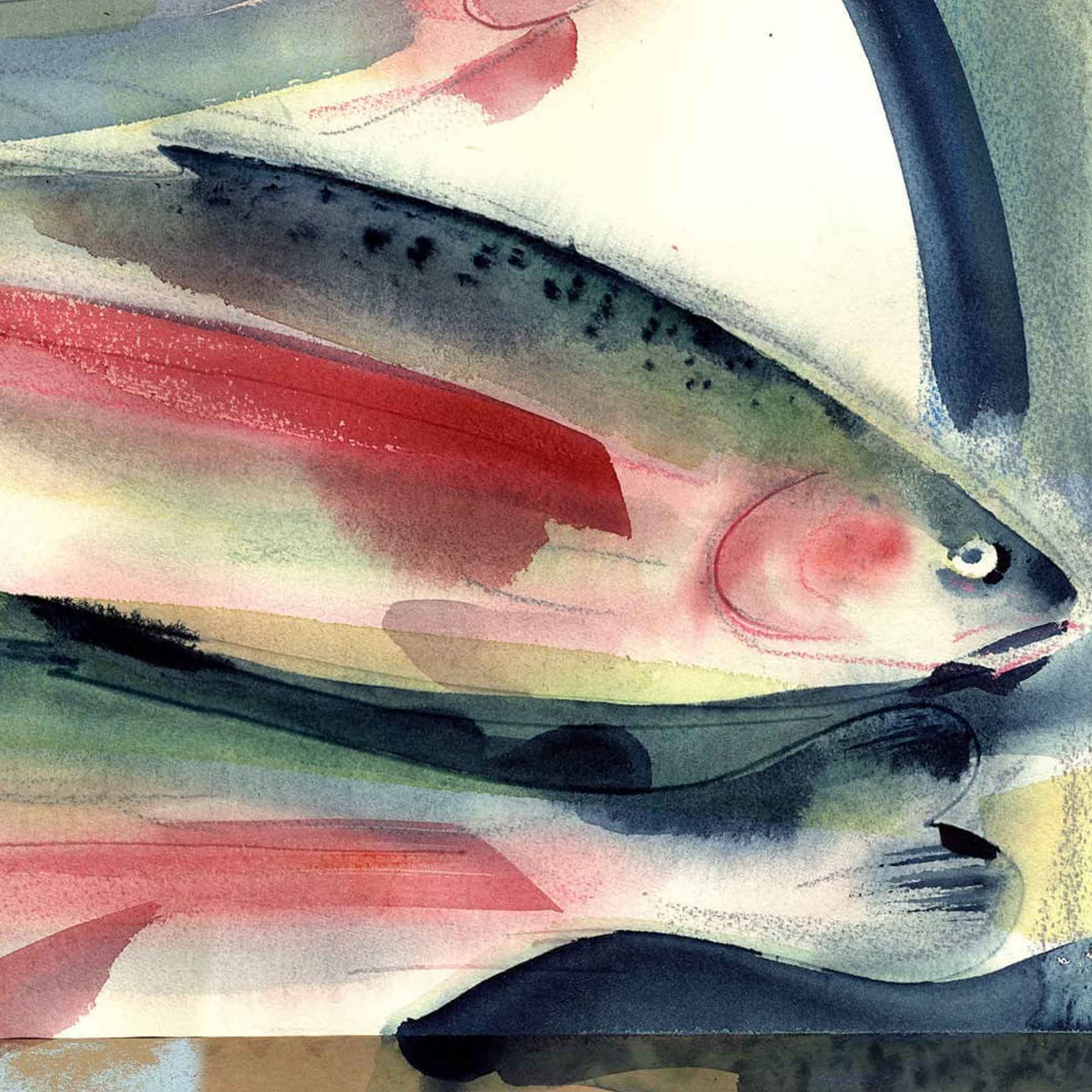
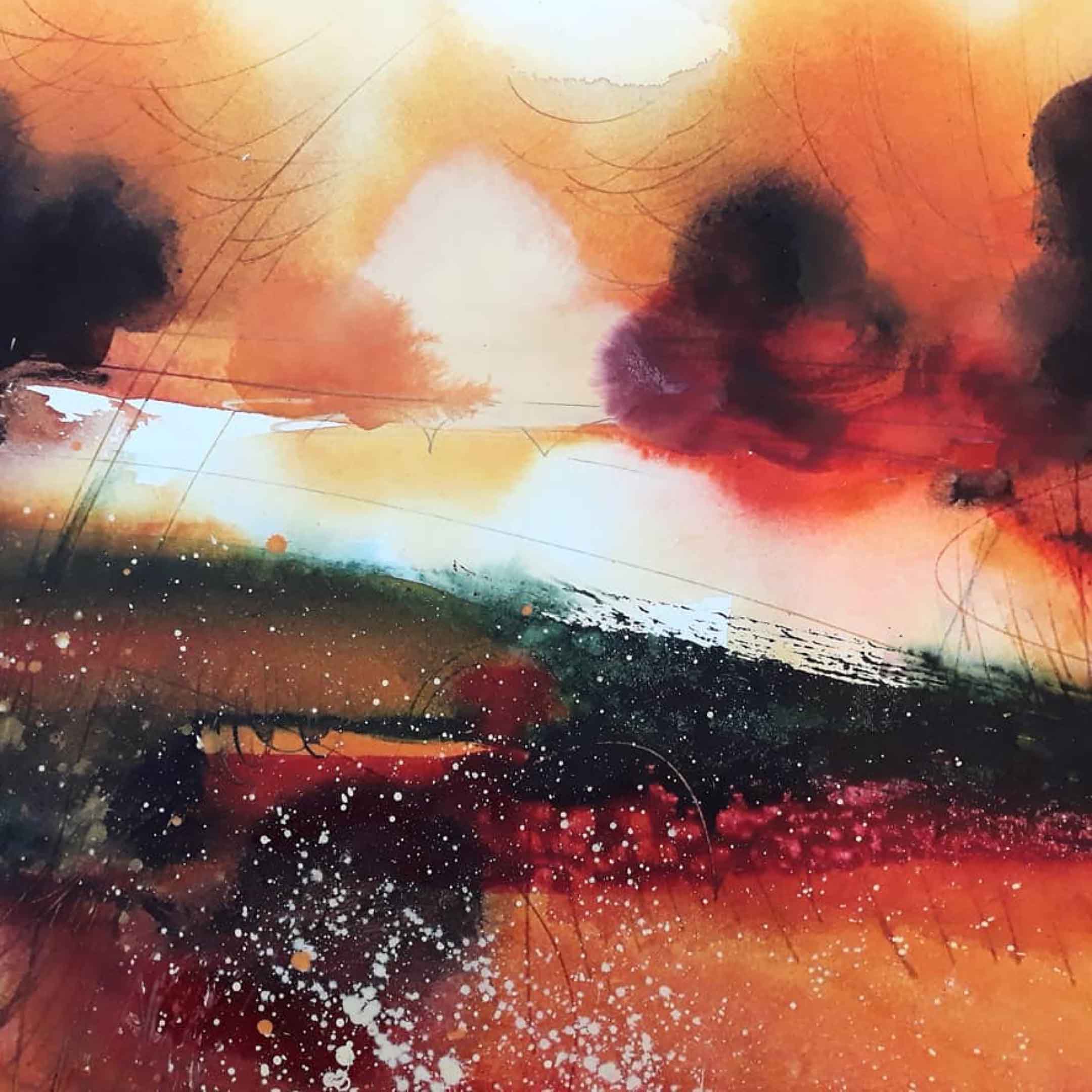
Is it easier or harder now you are a full-time artist?
The pressure is certainly on now to run my artistic output like a legitimate business and put strategies in place that will eventually earn some money – I don’t have the justification of my paid job to spend all my time experimenting any more! I have to do accounts, log expenses, run my website and social media, write blog posts, run an email list, find out how to video and photograph myself professionally, find and budget for services such as scanning and printing. I’m way behind with most of these already, it’s hard to find the time to paint sometimes – though I partly blame my new rescue dog, who needs a lot of training and walking
Could you tell us about the materials you use?
Always use the best that you can afford. I have always been faithful to the recommendations I was given at art college, so I use Winsor and Newton ‘Artist’ (now called ‘Professional’) quality watercolours in tubes which I sometimes mix with WN Designers Gouache, and have graduated to Arches watercolour paper because of its wonderful strength. I also recommend St.Cuthbert’s Mill Saunders Waterford paper. I alternate between hot pressed and Not surfaces, depending on the technique I’m using. I also have some WN ‘Sceptre Gold’ brushes that have lasted over 20 years continuous use! For practice, you can use cheaper paper but make sure it is a good brand. My practice paper is by Canson, I happened to get hold of a lot of it at a bargain price and it stretches really well, but it is cellulose based so it’s not very strong. Keep an eye on the permanence and lightfastness ratings of your colours. Alizarin Crimson and many of the pinks will fade over time, so I only use the ‘permanent’ versions.
Hope all that is helpful information, I have a blog over at www.doloresphelps.net that has some more detail about me and my work. I will also soon be adding a post all about the dramatic lives of my parents. One was a refugee from the Spanish Civil War, and the other a pirate radio DJ, so do take a look!
